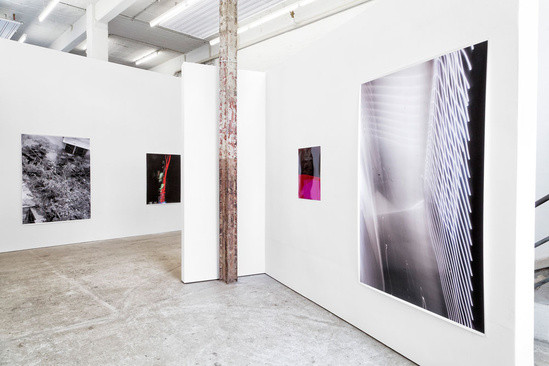Arthur Zalewski
03 May - 15 Jun 2014
ARTHUR ZALEWSKI
Notes on Beijing
3 May – 15 June 2014
An error in transmission
To know China is an illusion: no one can subsume 1.3 billion people under a single political or cultural dictum. Arthur Zalewski’s Notes on Beijing (2013/14) shows people and places without specific geographic attributes at the outset, which do not manifest any explicit cultural identity. Only on second glance do we begin to recognise streets, buildings and places that are of central significance to Beijing: the Supreme Court of the People’s Republic of China, the Foreign Legation Quarter, the National Museum or the old Summer Palace. History and culture, tradition and current politics constitute these sites.
However, such representative functions are of no concern in Notes on Beijing, the focus is on the intersection of everyday events and historical context. Everyday life, beyond the spheres of politics, culture and history, as presented here, appears to be the same everywhere. The pictures show us a world that we seem to know. But what is our reference? While Arthur Zalewski makes use of established photographic formats and genres, shooting series, sequences and individual images, the pictures do not settle for a common narrative. The notes remain incomplete. The fragments reflect the reality of life and the experience of the artist on site: no coherent image of the city, the people or even the country can be extracted.
It is hard to avoid clichés about China. Too many images exist and we are accustomed to too many presumptions. In China, local and Western culture interact continuously. Ways of dress and fashions may seem familiar, but then again traditional forms become more clearly apparent or we gain a sense of political repression. The strange is revoked by familiar gestures and appearances. An error in transmission. For the cultural and social specifics are constantly present. Anytime you believe to have understood something you are bound to be disappointed or irritated. That which we see is at the same time that which we do not see.
– Maik Schlüter, 2014
Notes on Beijing
3 May – 15 June 2014
An error in transmission
To know China is an illusion: no one can subsume 1.3 billion people under a single political or cultural dictum. Arthur Zalewski’s Notes on Beijing (2013/14) shows people and places without specific geographic attributes at the outset, which do not manifest any explicit cultural identity. Only on second glance do we begin to recognise streets, buildings and places that are of central significance to Beijing: the Supreme Court of the People’s Republic of China, the Foreign Legation Quarter, the National Museum or the old Summer Palace. History and culture, tradition and current politics constitute these sites.
However, such representative functions are of no concern in Notes on Beijing, the focus is on the intersection of everyday events and historical context. Everyday life, beyond the spheres of politics, culture and history, as presented here, appears to be the same everywhere. The pictures show us a world that we seem to know. But what is our reference? While Arthur Zalewski makes use of established photographic formats and genres, shooting series, sequences and individual images, the pictures do not settle for a common narrative. The notes remain incomplete. The fragments reflect the reality of life and the experience of the artist on site: no coherent image of the city, the people or even the country can be extracted.
It is hard to avoid clichés about China. Too many images exist and we are accustomed to too many presumptions. In China, local and Western culture interact continuously. Ways of dress and fashions may seem familiar, but then again traditional forms become more clearly apparent or we gain a sense of political repression. The strange is revoked by familiar gestures and appearances. An error in transmission. For the cultural and social specifics are constantly present. Anytime you believe to have understood something you are bound to be disappointed or irritated. That which we see is at the same time that which we do not see.
– Maik Schlüter, 2014

